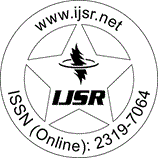Downloads: 116
Nigeria | Environmental Science Studies | Volume 3 Issue 11, November 2014 | Pages: 2763 - 2767
Phytodegradation of Compost Leachate by Water Hyacinth (Eichhornia Crassipes) from Aqueous Solutions
Abstract: Fifty (50) litres of untreated compost leachate from shell farm, Jeddo, Delta state was filtered and transferred to a treatment tank of about 60 litres capacity containing water hyacinth. The experiment was allowed to stand for 112 days without aeration. Leachate and plant samples were collected and analyzed before and after the treatment. The result showed that all physical, chemical and microbial parameters analyzed in the untreated leachate were within the WHO limit except for TDS, TSS, EC, colour, DO, BOD5, COD, chloride, lead, iron, cadmium and total coliform. However, after treatment pH was reduced by 5.41 %, total dissolved solid 91.00 %, total suspended solids 71.12 %, electrical conductivity 18.70 %, biological oxygen demand 69.05 %, chemical oxygen demand 68.81 %, colour 90.48 %, chloride 94.32 %, sodium 90.37 %, magnesium 93.40 %, sulphate 89.07 %, phosphorous 90.94 %, lead 98.83 %, iron 98.40 %, zinc 81.95 %, cadmium 100.00 %, copper 0.00 %, total fungi count 91.39 %, total bacterial count 86.48 % and total coliform count 87.45 %; while dissolved oxygen and nitrate increased by 24.00 % and 94.75 % respectively Comparison of the results of the analyses after treatment with WHO standards showed that the values of dissolved oxygen and total coliform count were still not within WHO limit. The chemical characteristics of the leachate clearly indicated that it is of a high threat to the environment especially the aquatic environment which is the final recipient of this waste. However, Water hyacinth exhibited quite a distinct response and is recommended for the bio-purification of compost leachate.
Keywords: Compost leachate, Bioremediation, phytoremediation, Water hyacinth, aquatic plants
How to Cite?: Ibezute A.C., Tawari-Fufeyin P., "Phytodegradation of Compost Leachate by Water Hyacinth (Eichhornia Crassipes) from Aqueous Solutions", Volume 3 Issue 11, November 2014, International Journal of Science and Research (IJSR), Pages: 2763-2767, https://www.ijsr.net/getabstract.php?paperid=OCT141592, DOI: https://dx.doi.org/10.21275/OCT141592
